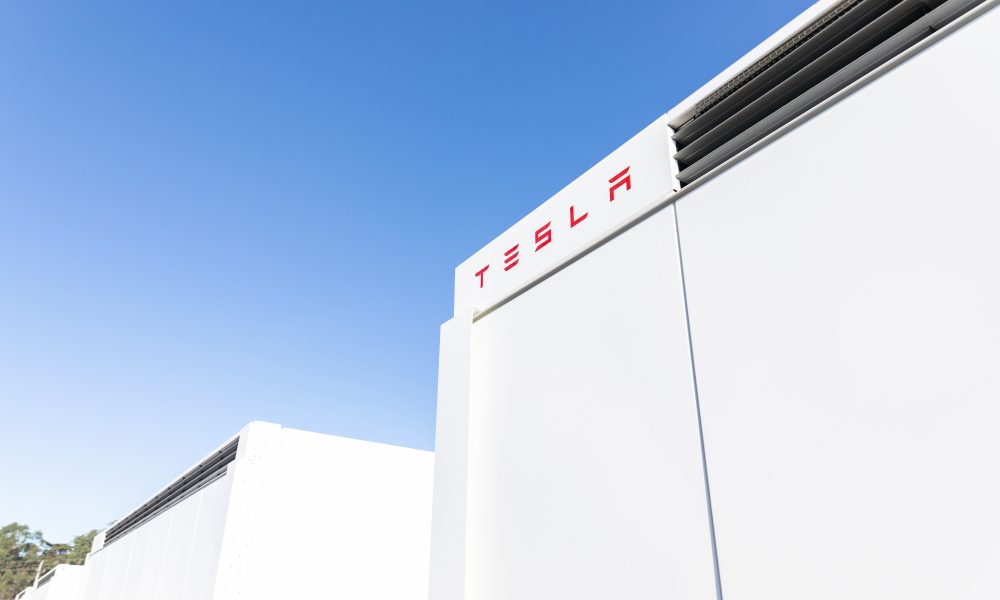Science
Tesla’s Megapacks Arrive to Replace Coal Plant with Renewables

The first shipment of over 300 Tesla Megapacks has arrived at the site of the Stanwell Battery Project in Queensland, Australia. This significant development marks the beginning of a massive battery energy storage system (BESS) aimed at replacing the nearby Stanwell coal generation plant. The project will ultimately feature 324 Megapack units, which are expected to support a capacity of 300 megawatts (MW) and 1,200 megawatt-hours (MWh).
In a press release issued last week, the Stanwell Battery Project confirmed the arrival of the initial Tesla Megapack 2XL units at the site located just outside of Rockhampton. The project is designed to enhance Queensland’s energy portfolio by incorporating cleaner and more flexible energy solutions. According to Angie Zahra, General Manager of Stanwell Central Generation, “The Stanwell Battery is part of the diversification of our portfolio, to include cleaner and more flexible energy solutions.” Zahra also noted that the battery project is one aspect of the company’s broader plan to achieve 800 MW of battery energy storage capacity.
Job Creation and Renewable Energy Goals
The construction of the Stanwell Battery Project is being facilitated by Yurika, a government-owned company. It is anticipated that the project will create approximately 80 jobs in the region. The battery system is projected to be fully operational by May 2027, with initial commissioning of the Megapacks targeted for November 2025.
The new battery system is intended to replace the Stanwell coal generation plant, which the government plans to gradually phase out starting in 2026. This initiative is part of a broader effort to achieve an 80 percent renewable energy generation ratio by 2035. In tandem with the closure of the Stanwell plant, the government also plans to wind down the Tarong and Callide coal plants, further emphasizing the shift towards renewable energy sources.
Tesla’s production capabilities for these Megapacks are notable. The company operates two production facilities, located in Lathrop, California, and another in Shanghai, China. The Shanghai Megafactory shipped its first units to Australia in March 2025. Upon reaching full production capacity, both facilities are expected to manufacture around 10,000 Megapack units per year.
The arrival of Tesla’s Megapacks signifies a pivotal step toward transitioning to renewable energy in Queensland, illustrating a growing commitment to sustainability and energy innovation.
-

 World5 months ago
World5 months agoSBI Announces QIP Floor Price at ₹811.05 Per Share
-

 Lifestyle5 months ago
Lifestyle5 months agoCept Unveils ₹3.1 Crore Urban Mobility Plan for Sustainable Growth
-

 Science4 months ago
Science4 months agoNew Blood Group Discovered in South Indian Woman at Rotary Centre
-

 World5 months ago
World5 months agoTorrential Rains Cause Flash Flooding in New York and New Jersey
-

 Top Stories5 months ago
Top Stories5 months agoKonkani Cultural Organisation to Host Pearl Jubilee in Abu Dhabi
-

 Sports4 months ago
Sports4 months agoBroad Advocates for Bowling Change Ahead of Final Test Against India
-

 Science5 months ago
Science5 months agoNothing Headphone 1 Review: A Bold Contender in Audio Design
-

 Top Stories5 months ago
Top Stories5 months agoAir India Crash Investigation Highlights Boeing Fuel Switch Concerns
-

 Business5 months ago
Business5 months agoIndian Stock Market Rebounds: Sensex and Nifty Rise After Four-Day Decline
-

 Sports4 months ago
Sports4 months agoCristian Totti Retires at 19: Pressure of Fame Takes Toll
-

 Politics5 months ago
Politics5 months agoAbandoned Doberman Finds New Home After Journey to Prague
-

 Top Stories5 months ago
Top Stories5 months agoPatna Bank Manager Abhishek Varun Found Dead in Well









